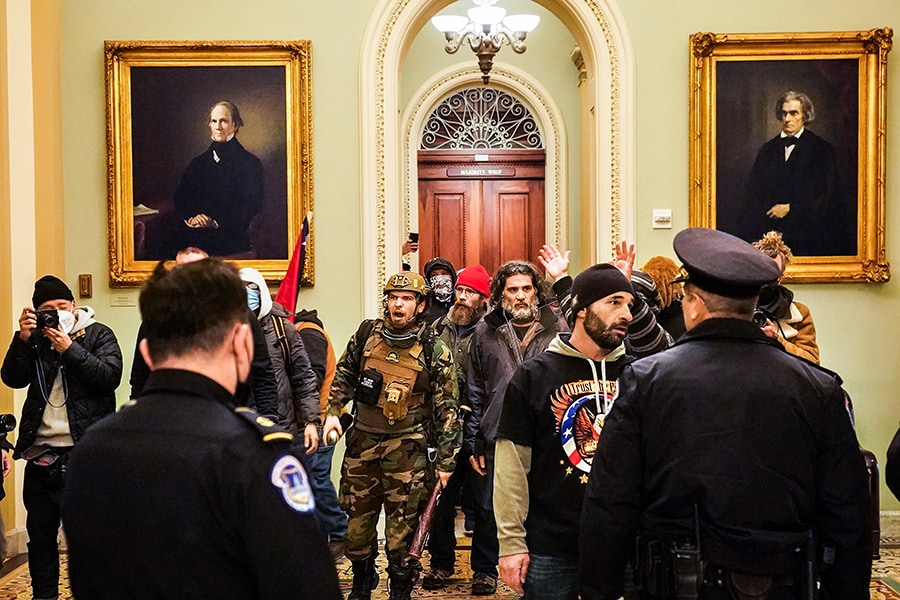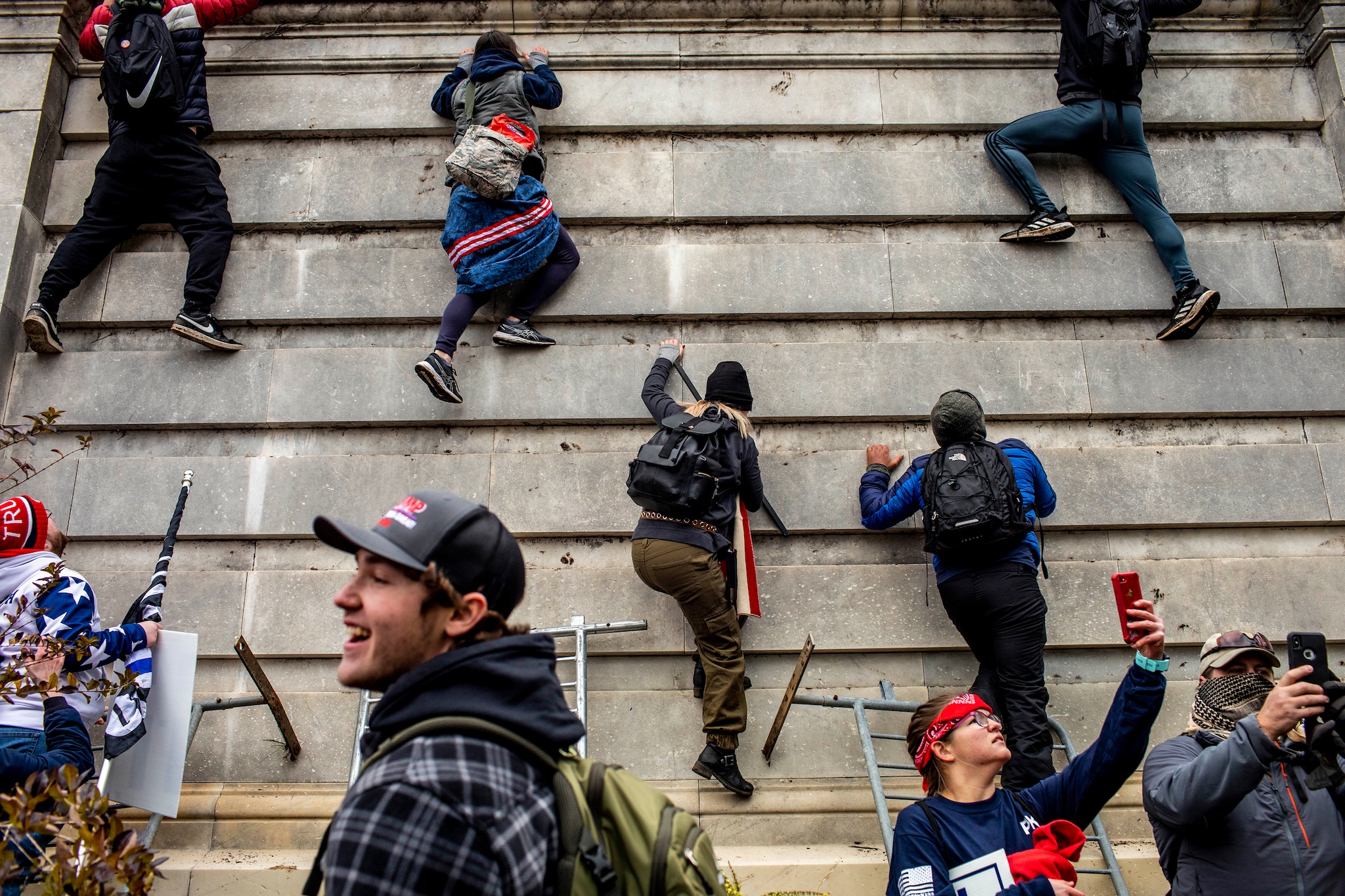
Breach of democracy: The violent end of the Donald Trump era
Coup. Insurrection. Sedition. The Trump presidency, rooted from the beginning in anger, division and conspiracy-mongering, comes to a close with a violent mob storming the Capitol at the instigation of a defeated leader trying to hang onto power as if America were just another authoritarian nation
 People protesting the presidential election results inside the Capitol in Washington on Wednesday, Jan. 6, 2021. After President Donald Trump urged supporters not to stand for his election defeat, crowds of angry partisans stormed the Capitol, putting a halt to the congressional acceptance of the election and bringing a violent end to his presidency; Image: Erin Schaff/The New York Times
People protesting the presidential election results inside the Capitol in Washington on Wednesday, Jan. 6, 2021. After President Donald Trump urged supporters not to stand for his election defeat, crowds of angry partisans stormed the Capitol, putting a halt to the congressional acceptance of the election and bringing a violent end to his presidency; Image: Erin Schaff/The New York Times
(Washington Memo)
WASHINGTON — So this is how it ends. The presidency of Donald John Trump, rooted from the beginning in anger, division and conspiracy-mongering, comes to a close with a violent mob storming the Capitol at the instigation of a defeated leader trying to hang onto power as if America were just another authoritarian nation.
The scenes in Washington would have once been unimaginable: A rampage through the citadel of American democracy. Police officers brandishing guns in an armed standoff to defend the House chamber. Tear gas deployed in the Rotunda. Lawmakers in hiding. Extremists standing in the vice president’s spot on the Senate dais and sitting at the desk of the speaker of the House.
The words used to describe it were equally alarming: Coup. Insurrection. Sedition. Suddenly the United States was being compared to a “banana republic” and receiving messages of concern from other capitals. “American carnage,” it turned out, was not what Trump would stop, as he promised upon taking office, but what he wound up delivering four years later to the very building where he took the oath.
The convulsion in Washington capped 1,448 days of Twitter storms, provocations, race-baiting, busted norms, shock-jock governance and truth-bending from the Oval Office that have left the country more polarized than in generations. Those who warned of worst-case scenarios only to be dismissed as alarmists found some of their darkest fears realized. By day’s end, even some Republicans suggested removing Trump under the 25th Amendment rather than wait two weeks for the inauguration of President-elect Joe Biden.
©2019 New York Times News Service
 Protestors climb onto the Capitol in Washington on Wednesday, Jan. 6, 2021. After President Donald Trump urged supporters not to stand for his election defeat, crowds of angry partisans stormed the Capitol, putting a halt to the congressional acceptance of the election and bringing a violent end to his presidency; Image: Jason Andrew/The New York Times
Protestors climb onto the Capitol in Washington on Wednesday, Jan. 6, 2021. After President Donald Trump urged supporters not to stand for his election defeat, crowds of angry partisans stormed the Capitol, putting a halt to the congressional acceptance of the election and bringing a violent end to his presidency; Image: Jason Andrew/The New York Times
 President Donald Trump addresses a rally on the Ellipse, with the White House in the background, in Washington on Wednesday, Jan. 6, 2021, protesting the presidential election results. As angry Trump supporters massed in the capital and a futile challenge to President-elect Joe Biden’s victory unfolded in Congress, the president most likely succeeded in handed Washington to the Democrats; Image: Pete Marovich/The New York Times
President Donald Trump addresses a rally on the Ellipse, with the White House in the background, in Washington on Wednesday, Jan. 6, 2021, protesting the presidential election results. As angry Trump supporters massed in the capital and a futile challenge to President-elect Joe Biden’s victory unfolded in Congress, the president most likely succeeded in handed Washington to the Democrats; Image: Pete Marovich/The New York Times
 Protestors converge onto the National Mall near the Washington Monument in Washington on Wednesday, Jan. 6, 2021, to protest the presidential election results. After President Donald Trump urged supporters not to stand for his election defeat, crowds of angry partisans stormed the Capitol, putting a halt to the congressional acceptance of the election and bringing a violent end to his presidency; Image: Jason Andrew/The New York Times
Protestors converge onto the National Mall near the Washington Monument in Washington on Wednesday, Jan. 6, 2021, to protest the presidential election results. After President Donald Trump urged supporters not to stand for his election defeat, crowds of angry partisans stormed the Capitol, putting a halt to the congressional acceptance of the election and bringing a violent end to his presidency; Image: Jason Andrew/The New York Times




